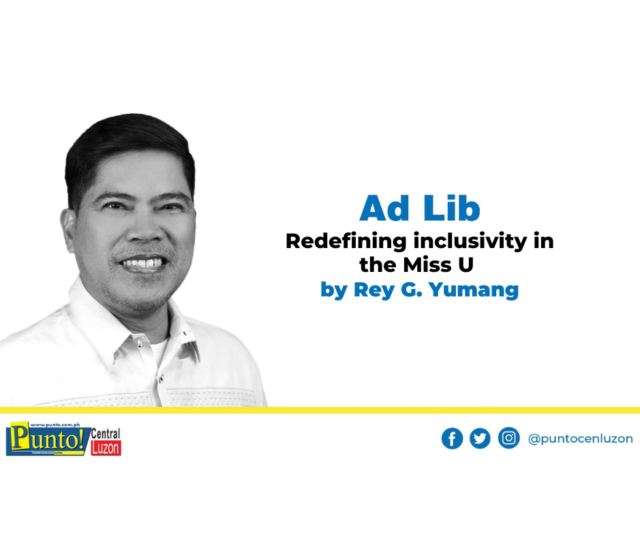NOW THAT Michelle Marquez Dee has finally returned to the country in a homecoming befitting of a true winner, I hope Filipino pageant fanatics all over the world can finally move on. While her non-inclusion in the top five or even top three shall remain as one of the most controversial and questionable results in Miss Universe history, MMD has definitely captured the hearts of many pageant enthusiasts from across the globe.
In the days that followed the most beautiful day in the universe, the internet pulsated with commentaries trying to explain in detail how MMD was supposedly robbed of the Miss Universe crown. There were even videos showing how the “rigging” took place right in front of the live audience, an “announcement” informing the now gullible public that a second round of top five announcement would take place and even “news” of a billionaire Iranian-American businessman willing to buy the Miss Universe Organization from its current owner, transgender Anne Jakapong Jakrajutatip of the Thailand-based JKN Global Group.
Much have been said and written about the results of the 72nd edition of the Miss Universe pageant; but there are changes in the annual pageant that deserve a space for insightful dialogue and meaningful conversation. This year we saw two transwomen, Miss Portugal Marina Machete and Miss Netherlands Rikkie Kollé compete after Spain’s Angela Ponce’s trailblazing participation in 2018. For the first time, there were two married women with children on the Miss Universe stage – Guatemala’s Michelle Cohn and Colombia’s Camila Avella who even advanced to the top five.
Nepal’s Jane Dipika Garrett, an advocate for body positivity, mental health and hormonal issues, became the first plus-size contestant. On the other hand, Miss Pakistan Erica Robin also made history as the first delegate from her country to join the Miss Universe competition. They were among the highly-applauded during the prelims and both made it to the top 20.
These changes are all in the name of inclusivity. While I am 100% all-out for the abolition of age, height, body size and civil status requirements, I cannot say the same for the participation of transwomen in the Miss Universe pageant, or any pageant for that matter.
Women have long fought for their rightful space in our society. Their years of struggles have been marked with blood, sweat and tears – from voting rights in the beginning of the 18th century to their inclusion in college courses which were once perceived to be exclusive for men; from stepping out of the mother-and-wife path to pursuing a career in fields once dominated by men. To see plus-size, physically-disabled, vertically-challenged, married, divorced women and mothers take center stage in areas that were once reserved for the fair-skinned, young and industry-defined beautiful women, is not only a way to break barriers and glass ceilings. It is also a powerful and liberating message to send to young girls around the world, who are bullied and told repeatedly that they could never go further in their lives because they look different.
If pageants were the perceived platforms for the transwomen to be seen and heard, there is the Miss International Queen, the world’s biggest beauty pageant for transgender women. Conceived in 2004 and owned by Tiffany’s Show Pattaya Co, Ltd of Pattaya City, Thailand, it has worked towards LGBTQ and transgender awareness and equality in both society and workforce. What is even commendable about this annual contest is that all the monetary profits of the actual televised show go to the Royal Charit AIDS Foundation of Thailand.
As for the transwomen who hope to make it big in the international fashion scene, there is the Slay Model Search Asia, an international modelling contest run by Slay Model Management, the world’s first and only transgender-exclusive model agency based in Los Angeles. It is founded, owned, and ran by Filipino-American director, producer, filmmaker and executive Cecilio “Cece” Asuncion, who constantly reminds the transpeople that their story is “not one of strife or victimhood, it is one of resilience, success and the importance of vigilance.”
Let us let the women take full control of and shine in the space they have created, while we encourage and empower the LGBTQIA++ community to create their own. More than the participation of one or two members in the Miss Universe pageant, I still believe that the LGBTQIA++ community has more meaningful causes and significant advocacies that directly affect all members. Let us support them in their fight for representation in Congress, join them as they end discrimination in the work place and unite with them as they put a stop to all forms of abuse and violence against their community. If we succeed in doing all these, then we give them a truly empowering crowning moment.





